Themed collection RACI100: Celebrating Australian Chemistry

Hirshfeld surface analysis
Hirshfeld surface analysis ventures beyond the current paradigm to view molecules as “organic wholes”, thereby fundamentally altering the discussion of intermolecular interactions through an unbiased identification of all close contacts, coupled with novel visualization tools.
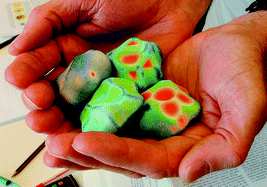
CrystEngComm, 2009,11, 19-32
https://doi.org/10.1039/B818330A
Computational electrochemistry: prediction of liquid-phase reduction potentials
The article reviews recent developments and applications for predicting the standard reduction potentials of chemical reactions in solution.
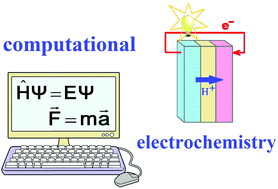
Phys. Chem. Chem. Phys., 2014,16, 15068-15106
https://doi.org/10.1039/C4CP01572J
The interplay of catechol ligands with nanoparticulate iron oxides
This perspective reviews the possibilities and problems for surface derivatisation of nanoparticulate iron oxides with catechol-based ligands, enabling the design of multifunctional nanoscopic devices
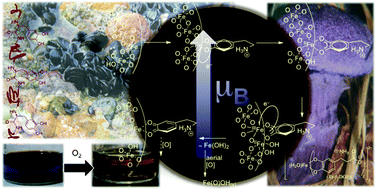
Dalton Trans., 2012,41, 2545-2559
https://doi.org/10.1039/C2DT11864E
Coordination chemistry and biology of chelators for the treatment of iron overload disorders
Iron is an essential but potentially harmful element when present in excess. Fe chelators have, for many years, been used to treat iron overload by targeting Fe deposits in vivo and being excreted as an intact complex. This Perspective will provide an overview of the current state of chelating drugs for Fe overload.
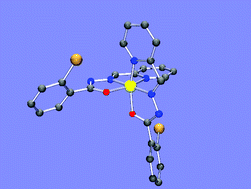
Dalton Trans., 2007, 3214-3220
https://doi.org/10.1039/B708133B
A net-based approach to coordination polymers 
J. Chem. Soc., Dalton Trans., 2000, 3735-3744
https://doi.org/10.1039/B003591M
The living dead – common misconceptions about reversible deactivation radical polymerization
We illustrate common misconceptions and errors when interpreting polymerization data from ‘Living/controlled’ radical polymerization, preferably termed ‘reversible deactivation radical polymerization’ (RDRP). Avoiding the discussed errors leads to better defined materials for soft matter materials applications.
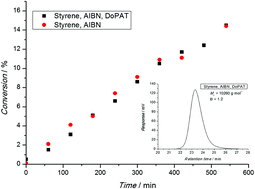
Mater. Horiz., 2016,3, 471-477
https://doi.org/10.1039/C6MH00265J
Statistics, damned statistics and nanoscience – using data science to meet the challenge of nanomaterial complexity
Combining advances in digital technology and modern methods in statistics with a detailed understanding of nano-structure/property relationships can pave the way for more realistic predictions of nanomaterials performance.

Nanoscale Horiz., 2016,1, 89-95
https://doi.org/10.1039/C5NH00126A
Multidimensional gas chromatography beyond simple volatiles separation
Comprehensive two-dimensional gas chromatography challenges the understanding of the composition of complex samples.
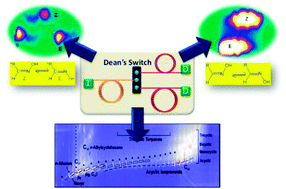
Chem. Commun., 2014,50, 8819-8833
https://doi.org/10.1039/C4CC02018A
Advances in chemical ligation strategies for the synthesis of glycopeptides and glycoproteins
A number of recent advances in the chemical synthesis of glycopeptides and glycoproteins are described, with particular focus on the development of peptide ligation strategies and their implementation in the convergent assembly of complex glycopeptides. Recent applications in the synthesis of full length homogeneous glycoproteins are also highlighted.
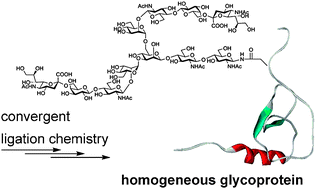
Chem. Commun., 2010,46, 21-43
https://doi.org/10.1039/B913845E
Alkali-metal bis(aryl)formamidinates: a study of coordinative versatility
This article highlights the coordinative versatility of one alkali-metal amidinate subclass; the bis(aryl)formamidinates. These compounds are invaluable in transition-metal studies but until recently had not been investigated in their own right.
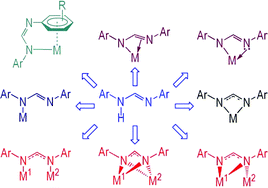
Chem. Commun., 2007, 1579-1590
https://doi.org/10.1039/B613984A
Macrolactam analogues of macrolide natural products
The chemical modification of macrolide natural products into aza- or lactam analogues is a strategy employed to improve their metabolic stability and biological activity.
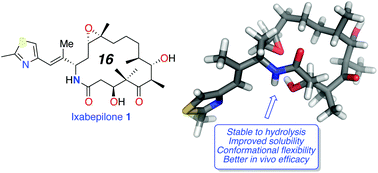
Org. Biomol. Chem., 2016,14, 11301-11316
https://doi.org/10.1039/C6OB02149B
Design of electrocatalysts for oxygen- and hydrogen-involving energy conversion reactions
This review provides insights into theoretical and experimental electrochemistry toward a better understanding of a series of key energy conversion reactions.
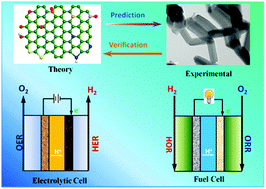
Chem. Soc. Rev., 2015,44, 2060-2086
https://doi.org/10.1039/C4CS00470A
The challenges of determining metal–protein affinities
This review surveys basic principles and diverse approaches of determining metal–protein affinities and pinpoints various problems associated with each approach. Representative case studies are given for metallo-proteins, -enzymes and -chaperones that bind metal ions selectively (KD < 10−7 M).
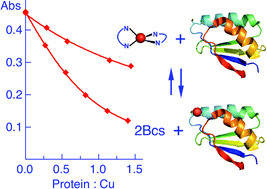
Nat. Prod. Rep., 2010,27, 768-789
https://doi.org/10.1039/B906690J
Thiol-ene “click” reactions and recent applications in polymer and materials synthesis
This review highlights examples of recent applications of both the radical-mediated and base/nucleophile-initiated thiol-ene reactions in polymer and materials synthesis. Initial discussion focuses on mechanistic aspects of these reactions and also notes some of the structural considerations, with respect to reactants, that should be considered when practising such chemistries.

Polym. Chem., 2010,1, 17-36
https://doi.org/10.1039/B9PY00216B
Host-defence peptides from the glandular secretions of amphibians: structure and activity
This review covers the literature to the end of 2005 on the subject of biologically active peptides from the glands of amphibians. These include neuropeptides, antimicrobial and anticancer active peptides, antiviral agents, fungicides and peptides which complex with Ca2+ calmodulin.

Nat. Prod. Rep., 2006,23, 368-393
https://doi.org/10.1039/B512118N
Centenary Lecture. The pursuit of selectivity in radical reactions
Robert Robinson Lecture. The logic of working with enzymes
The free-electron approximation for conjugated compounds
The aromatic bond
The reduction of organic compounds by metal-ammonia solutions
Metals, macrocycles and molecular assemblies – macrocyclic complexes in metallo-supramolecular chemistry
This tutorial review highlights the use of macrocyclic ligand complexes as versatile components for the construction of both discrete and polymeric metallo-supramolecular assemblies.
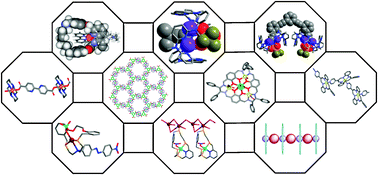
Chem. Soc. Rev., 2013,42, 1713-1727
https://doi.org/10.1039/C2CS35218D
Shape control in gold nanoparticle synthesis
This tutorial review summarises recent research into the controlled growth of gold nanoparticles of different morphologies and discusses the various chemical mechanisms that have been proposed to explain anisotropic growth.
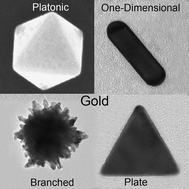
Chem. Soc. Rev., 2008,37, 1783-1791
https://doi.org/10.1039/B711490G
Current trends and future challenges in the experimental, theoretical and computational analysis of intervalence charge transfer (IVCT) transitions
The review highlights experimental, theoretical and computational methods which have developed over the past 35 years for the analysis of intervalence charge transfer (IVCT) transitions as a probe of the factors which govern electronic delocalisation and the activation barrier to intramolecular electron transfer.
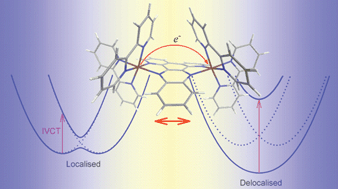
Chem. Soc. Rev., 2006,35, 424-440
https://doi.org/10.1039/B514590M
3D printed microfluidic devices: enablers and barriers
3D printing has the potential to significantly change the field of microfluidics.
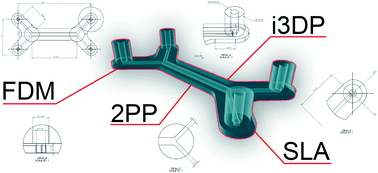
Lab Chip, 2016,16, 1993-2013
https://doi.org/10.1039/C6LC00284F
Cellulose modification by polymer grafting: a review
We review the various methods of attaching synthetic polymers to cellulose, a versatile approach to improve the functionality of cellulose and expand its applications.

Chem. Soc. Rev., 2009,38, 2046-2064
https://doi.org/10.1039/B808639G
Ionic liquids as amphiphile self-assembly media
Ionic liquids significantly increase the number of known solvents capable of amphiphile self-assembly.
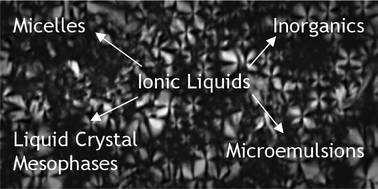
Chem. Soc. Rev., 2008,37, 1709-1726
https://doi.org/10.1039/B801395K
Advances in methods and algorithms in a modern quantum chemistry program package
Developments in computational quantum chemical models and algorithms broaden the scope of feasible applications.
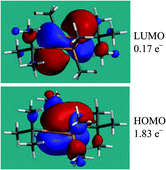
Phys. Chem. Chem. Phys., 2006,8, 3172-3191
https://doi.org/10.1039/B517914A
Rapid formation of self-organised Ag nanosheets with high efficiency and selectivity in CO2 electroreduction to CO
Rapid formation of hierarchical AgCl nanosheets is achieved through rational optimization of anodisation parameters. The electroreduced halide-derived Ag nanosheets exhibit excellent performance with a ∼95% CO2 to CO conversion efficiency at an overpotential as low as 0.29 V.
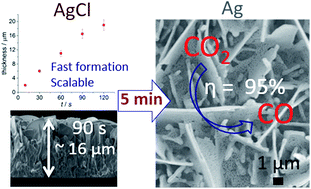
Sustainable Energy Fuels, 2017,1, 1023-1027
https://doi.org/10.1039/C7SE00069C
Charge generation and morphology in P3HT : PCBM nanoparticles prepared by mini-emulsion and reprecipitation methods
P3HT : PCBM nanoparticles exhibit charge generation and nanomorphology similar to unannealed and annealed blend films, depending on the preparation method.
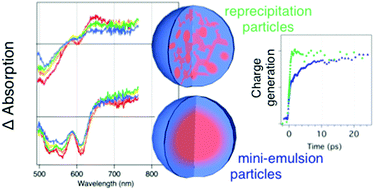
Nanoscale, 2015,7, 19899-19904
https://doi.org/10.1039/C5NR06244F
Highly efficient cerium dioxide nanocube-based catalysts for low temperature diesel soot oxidation: the cooperative effect of cerium- and cobalt-oxides
Co3O4 promoted CeO2 nanocubes exhibit a remarkable catalytic activity for soot oxidation, attributed to the superior reducible nature of CeO2 and the preferential exposure of CeO2 (100) and Co3O4 (110) facets.
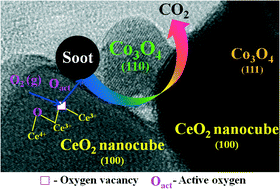
Catal. Sci. Technol., 2015,5, 3496-3500
https://doi.org/10.1039/C5CY00525F
Agonist responses of (R)- and (S)-3-fluoro-γ-aminobutyric acids suggest an enantiomeric fold for GABA binding to GABAC receptors
The agonist activity of (R)-3F-GABA is up to an order of magnitude more potent that the (S)-3F-GABA enantiomer with GABAC receptors, suggesting an enantiomeric twisted conformation for the GABA binding.
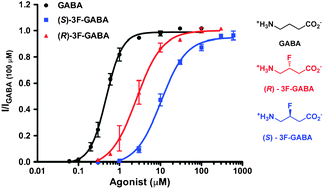
Chem. Commun., 2011,47, 7956-7958
https://doi.org/10.1039/C1CC12141C
Nanosized anatase TiO2 single crystals for enhanced photocatalytic activity
Anatase TiO2 single crystals with 18% {001} facets have a raised conduction band minimum by 0.1 eV, and exhibits photocatalytic activity both for generating ˙OH radicals and for splitting water into hydrogen that is markedly superior—by factors of 5.6 and 8.2, respectively—to reference ca. 3 μm anatase TiO2 with 72% {001} facets.
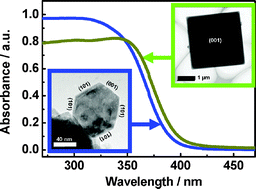
Chem. Commun., 2010,46, 755-757
https://doi.org/10.1039/B919895D
The first example of a coordination polymer from the expanded 4,4′-bipyridine ligand [Ru(pytpy)2]2+
(pytpy = 4′-(4-pyridyl)-2,2′∶6′,2″-terpyridine)
The complex [Ru(pytpy)2]2+ (pytpy = 4′-(4-pyridyl)-2,2′∶6′,2″-terpyrdine) functions as an expanded 4,4′-bipyridine and forms a 1-D coordination polymer with silver(I).
![Graphical abstract: The first example of a coordination polymer from the expanded 4,4′-bipyridine ligand [Ru(pytpy)2]2+ (pytpy = 4′-(4-pyridyl)-2,2′∶6′,2″-terpyridine)](/en/Image/Get?imageInfo.ImageType=GA&imageInfo.ImageIdentifier.ManuscriptID=B703622A&imageInfo.ImageIdentifier.Year=2007)
CrystEngComm, 2007,9, 456-459
https://doi.org/10.1039/B703622A
An unprecedented eight-connected self-penetrating network based on pentanuclear zinc cluster building blocks
An unprecedented eight-connected self-penetrating network is constructed based on pentanuclear zinc cluster building blocks and linear dicarboxylate linkers. This 3D network defines a new self-penetrating topology for eight-connected networks and represents the highest connected topology presently known for self-penetrating systems.
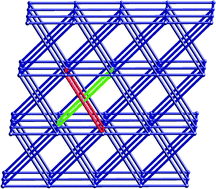
Chem. Commun., 2005, 4789-4791
https://doi.org/10.1039/B506398A
Solar light induced photocatalytic oxidation of benzyl alcohol using heteropolyoxometalate catalysts of the type [S2M18O62]4−
The use of solar light coupled with sulpho-polyoxoanions [S2M18O62]4− (M = Mo, W) for the selective oxidation of benzyl alcohol is demonstrated. A catalytic cycle involving air-oxygen regeneration of the [S2W18O62]4− catalyst was established.
![Graphical abstract: Solar light induced photocatalytic oxidation of benzyl alcohol using heteropolyoxometalate catalysts of the type [S2M18O62]4−](/en/Image/Get?imageInfo.ImageType=GA&imageInfo.ImageIdentifier.ManuscriptID=B306521A&imageInfo.ImageIdentifier.Year=2003)
Green Chem., 2003,5, 364-366
https://doi.org/10.1039/B306521A
Ambient temperature reversible addition–fragmentation chain transfer polymerisation
Chem. Commun., 2001, 1044-1045
https://doi.org/10.1039/B101794M
Supramolecular anion recognition in water: synthesis of hydrogen-bonded supramolecular frameworks
Charge-assisted hydrogen bonds between a tetratopic receptor and terephthalate anions assemble a switchable supramolecular framework material in water.
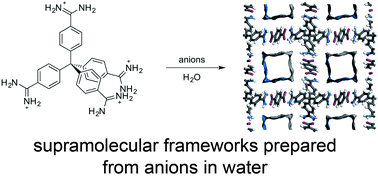
Chem. Sci., 2017,8, 3019-3025
https://doi.org/10.1039/C7SC00201G
Two-coordinate group 14 element(II) hydrides as reagents for the facile, and sometimes reversible, hydrogermylation/hydrostannylation of unactivated alkenes and alkynes
The ambient temperature hydrometallations of a variety of unactivated alkene and alkyne substrates using two-coordinate hydrido-tetrylenes, :E(H)(L†) (E = Ge or Sn; L† = extremely bulky amide), are reported.
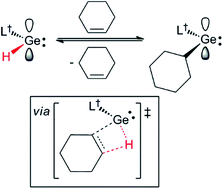
Chem. Sci., 2015,6, 7249-7257
https://doi.org/10.1039/C5SC03376D
Connecting electrodes with light: one wire, many electrodes
The requirement of a wire to each electrode is central to the design of any electronic device but can also be a major restriction. Herein it is shown how electrodes can be connected using light such that a multielectrode device requires only a single physical wire.
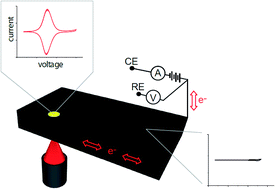
Chem. Sci., 2015,6, 6769-6776
https://doi.org/10.1039/C5SC03011K
N-Heterocyclic carbene catalysed redox isomerisation of esters to functionalised benzaldehydes
N-Heterocyclic carbene catalysed redox isomerisation with reduction about the carbonyl has been developed in the transformation of trienyl esters to tetrasubstituted benzaldehydes.
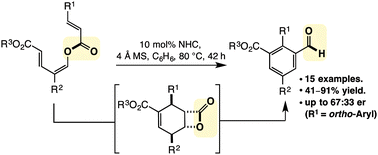
Chem. Sci., 2015,6, 2366-2370
https://doi.org/10.1039/C4SC03726J
Molecular coolers: The case for [CuII5GdIII4]
The use of triethanolamine (teaH3) in 3d/4f chemistry has led to the isolation of an unusual [CuII5GdIII4] cluster. It is demonstrated that this cluster can be successfully exploited for magnetic refrigeration.
![Graphical abstract: Molecular coolers: The case for [CuII5GdIII4]](/en/Image/Get?imageInfo.ImageType=GA&imageInfo.ImageIdentifier.ManuscriptID=C1SC00038A&imageInfo.ImageIdentifier.Year=2011)
Chem. Sci., 2011,2, 1166-1169
https://doi.org/10.1039/C1SC00038A
The short-term reduction of uranium by nanoscale zero-valent iron (nZVI): role of oxide shell, reduction mechanism and the formation of U(V)-carbonate phases
Uranium(V) can be stabilized in a carbonate solid phase upon reaction with nanoscale zero-valent iron (nZVI).
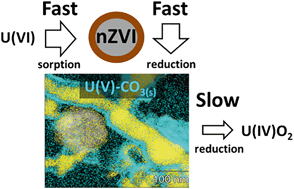
Environ. Sci.: Nano, 2017,4, 1304-1313
https://doi.org/10.1039/C7EN00024C
Comparison of fast electron transfer kinetics at platinum, gold, glassy carbon and diamond electrodes using Fourier-transformed AC voltammetry and scanning electrochemical microscopy
Complementary techniques reveal new insights on electron transfer rates at different electrode materials.
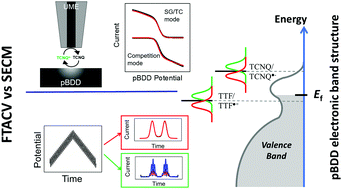
Phys. Chem. Chem. Phys., 2017,19, 8726-8734
https://doi.org/10.1039/C7CP00968B
Interactions between circulating nanoengineered polymer particles and extracellular matrix components in vitro
A simple and modular flow-based system is used to rapidly screen fundamental interactions of soft polymer particles with biologically relevant microenvironments under flow-conditions.
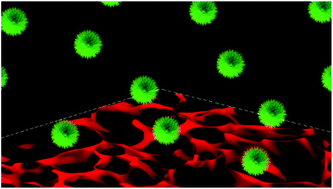
Biomater. Sci., 2017,5, 267-273
https://doi.org/10.1039/C6BM00726K
On-line determination by small angle X-ray scattering of the shape of hen egg white lysozyme immediately following elution from a hydrophobic interaction chromatography column
This study documents the use of an integrated approach, involving on-line HIC interfaced with SAXS measurements, to monitor the conformational status of proteins immediately upon elution from a chromatographic column.
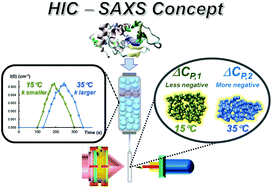
Analyst, 2016,141, 5810-5814
https://doi.org/10.1039/C6AN00851H
Blue-shifted emission and enhanced quantum efficiency via π-bridge elongation in carbazole–carborane dyads
Carbazole–carborane linear and V-shaped dyads display unusual blue-shifts in charge-transfer (CT) emission on π-system lengthening; the linear dyads luminesce via a combination of local excited and CT emission, with quantum efficiencies up to 86% in solution.

Phys. Chem. Chem. Phys., 2016,18, 15719-15726
https://doi.org/10.1039/C6CP02870E
The synthesis of di-carboxylate esters using continuous flow vortex fluidics
Faraday wave assisted flow chemistry. Vibrations and shear stress drive the synthesis of di-esters in minutes using room temperature vortex fluidics.
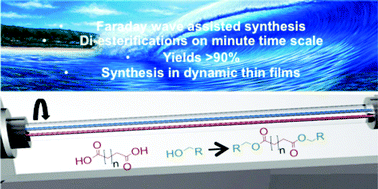
Green Chem., 2016,18, 2193-2200
https://doi.org/10.1039/C5GC02494C
Extremely high arsenic removal capacity for mesoporous aluminium magnesium oxide composites
Mesoporous aluminium magnesium oxide composites exhibit extremely high adsorption capacities for As(V) and As(III) with excellent environmental adaptability and selectivity.
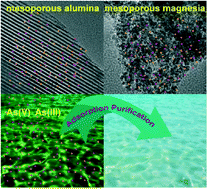
Environ. Sci.: Nano, 2016,3, 94-106
https://doi.org/10.1039/C5EN00171D
Solution processed graphene structures for perovskite solar cells
Solution processed graphene electrodes are used as transparent electrodes in perovskite solar cells to test their feasibility. The efficiency obtained using the transparent graphene electrodes is further improved by employing graphene into both compact and mesoporous TiO2 layers of the devices.
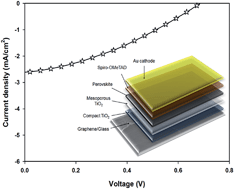
J. Mater. Chem. A, 2016,4, 2605-2616
https://doi.org/10.1039/C5TA08996D
Direct electrochemical formation of nanostructured amorphous Co(OH)2 on gold electrodes with enhanced activity for the oxygen evolution reaction
The rapid and direct electrochemical formation of amorphous nanostructured Co(OH)2 on gold electrodes under room temperature conditions was found to be a highly active, yet stable, precursor for the OER.
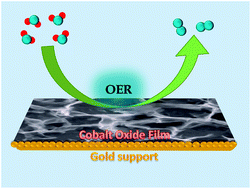
J. Mater. Chem. A, 2016,4, 991-999
https://doi.org/10.1039/C5TA09125J
Pd-complex driven formation of single-chain nanoparticles
The preparation and in-depth characterization of well-defined, palladium(II) crosslinked single-chain nanoparticles (Pd-SCNPs) is reported. In addition, a novel procedure for interpreting the SEC chromatograms of SCNPs by log-normal distribution (LND) simulations is introduced.
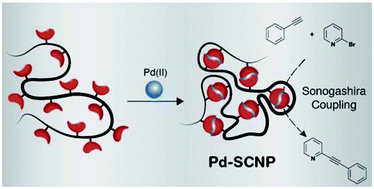
Polym. Chem., 2015,6, 4358-4365
https://doi.org/10.1039/C5PY00389J
Rapid synthesis of ultrahigh molecular weight and low polydispersity polystyrene diblock copolymers by RAFT-mediated emulsion polymerization
An environmentally friendly emulsion technique produces uniform nanoparticles with precise control over molecular weight and particle size.
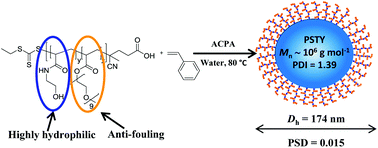
Polym. Chem., 2015,6, 3865-3874
https://doi.org/10.1039/C5PY00166H
Degradation observations of encapsulated planar CH3NH3PbI3 perovskite solar cells at high temperatures and humidity
The stability of encapsulated planar-structured CH3NH3PbI3 (MAPbI3) perovskite solar cells (PSCs) was investigated under various simulated environmental conditions.
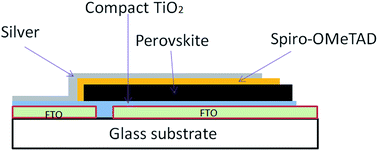
J. Mater. Chem. A, 2015,3, 8139-8147
https://doi.org/10.1039/C5TA00358J
Dye regeneration and charge recombination in dye -sensitized solar cells with ferrocene derivatives as redox mediators
A family of ferrocene derivatives are used to probe the effect of the driving force on charge transfer processes occurring in DSCs.
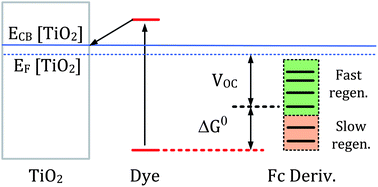
Energy Environ. Sci., 2012,5, 7090-7099
https://doi.org/10.1039/C2EE21257A
Improving the light-harvesting of amorphous silicon solar cells with photochemical upconversion
Photochemical upconversion (UC) is applied to amorphous silicon solar cells (SC) to bring about an increase in light-harvesting efficiency.
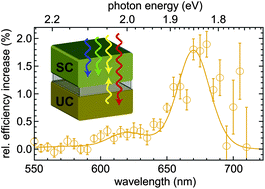
Energy Environ. Sci., 2012,5, 6953-6959
https://doi.org/10.1039/C2EE21136J
Investigation into thiol-(meth)acrylate Michael addition reactions using amine and phosphine catalysts
Various thiols have been reacted with short oligomers in the presence of amines and phosphines via thiol–ene click to yield end functional macromolecules.
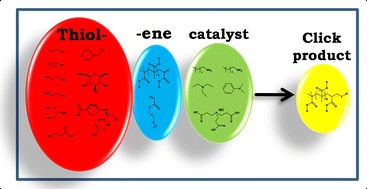
Polym. Chem., 2010,1, 1196-1204
https://doi.org/10.1039/C0PY00100G
On the concept of ionicity in ionic liquids
The concept of ionicity, as the effective fraction of ions available to participate in conduction, is explored for ionic liquids using an adjusted Walden plot and an “ionicity” plot of calculated versus measured molar conductivity.
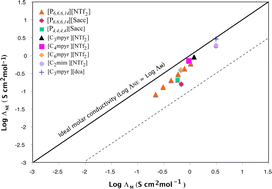
Phys. Chem. Chem. Phys., 2009,11, 4962-4967
https://doi.org/10.1039/B900201D
Rhodium(I) and iridium(I) complexes containing bidentate phosphine -imidazolyl donor ligands as catalysts for the hydroamination and hydrothiolation of alkynes
A series of rhodium(I) and iridium(I) complexes containing bidentate phosphine-imidazolyl ligands were synthesised and found to be efficient as catalysts for the hydroamination and hydrothiolation of alkynes.
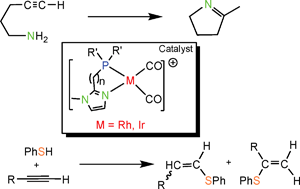
Dalton Trans., 2009, 3599-3614
https://doi.org/10.1039/B821188D
Novel platinum(II)-based anticancer complexes and molecular hosts as their drug delivery vehicles
This paper presents recent results and discusses advances in three main areas of research into improved platinum(II)-based anticancer drug design and delivery.
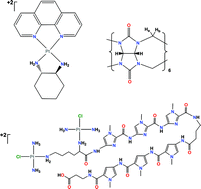
Dalton Trans., 2007, 5055-5064
https://doi.org/10.1039/B704973K
Investigation of the gas phase reactivity of the 1-adamantyl radical using a distonic radical anion approach
The intrinsic gas phase reactivity of the 1-adamantyl radical is interrogated using a linear ion trap mass spectrometer by employing a distonic radical anion as an effective model for the neutral bridgehead radical.

Org. Biomol. Chem., 2007,5, 3495-3503
https://doi.org/10.1039/B711156H
Cationic, linear Au(I) N-heterocyclic carbene complexes: synthesis, structure and anti-mitochondrial activity
A family of six gold(I) complexes of N-heterocyclic carbene ligands has been synthesized and structurally characterized and the relationship between the lipophilicities and anti-mitochondrial activities of the complexes evaluated.

Dalton Trans., 2006, 3708-3715
https://doi.org/10.1039/B602560A
Towards high capacity latex-coated porous polymer monoliths as ion-exchange stationary phases
The preparation of high capacity agglomerated monolithic ion-exchangers for capillary ion chromatography is described. By post-modification of reactive monoliths it was possible to increase the ion-exchange capacity by up to more than 30-fold over previous methods.
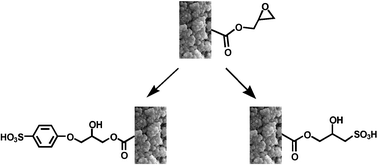
Analyst, 2006,131, 215-221
https://doi.org/10.1039/B511398A
From well defined star-microgels to highly ordered honeycomb films
Narrow polydispersed star-microgels prepared by ATRP were used as precursors to highly ordered honeycomb films, the properties of which were influenced by the architecture of the star polymers.
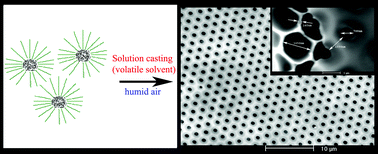
J. Mater. Chem., 2005,15, 1286-1292
https://doi.org/10.1039/B414421J
Supramolecular Sn⋯Cl associations in diorganotin dichlorides and their influence on molecular geometry as studied by ab initio molecular orbital calculations
Sn⋯Cl interactions are recognisable in the crystal structures of R2SnCl2 but these adopt a variety of patterns based, usually, on chain or double-chain topologies that are stabilised by an average of one or two Sn⋯Cl interactions per tin atom. Evidence that such interactions are significant is found in the gas phase geometry optimised structures that show evidence of marked symmetrisation in the absence of these Sn⋯Cl interactions.
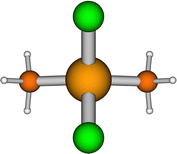
CrystEngComm, 2003,5, 331-336
https://doi.org/10.1039/B308922C
Ionic liquids based on imidazolium, ammonium and pyrrolidinium salts of the dicyanamide anion
New families of salts, based on quaternary ammonium [3], 1-methyl-3-alkylimidazolium [2] or N-methyl-N-alkylpyrrolidinium [4] organic cations together with the dicyanamide (dca, N(CN)2−, [1]) anion are reported. The ionic liquids exhibit low viscosities at room temperature and are stable to at least 200 °C.
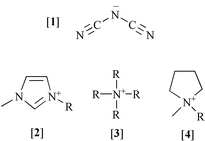
Green Chem., 2002,4, 444-448
https://doi.org/10.1039/B205641K
Macrocyclic ligand design. Structure–function relationships involving the interaction of pyridinyl -containing, mixed oxygen–nitrogen donor macrocycles with cobalt(II), nickel(II), copper(II), zinc(II), cadmium(II), silver(I) and lead(II)
A comparative investigation of the interaction of three dibenzo-substituted, mixed oxygen–nitrogen donor macrocycles with cobalt(II), nickel(II), copper(II), zinc(II), cadmium(II), silver(I) and lead(II) has been carried out. The thermodynamic stabilities of the respective complexes in 95% methanol (I = 0.1; Et4NClO4, 25 °C) have been determined. The results are compared with those obtained previously for related mixed-donor (cyclic) systems.
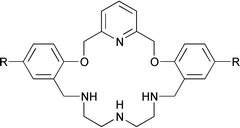
J. Chem. Soc., Dalton Trans., 2002, 2185-2193
https://doi.org/10.1039/B201195F
Observation of a cubic phase in mesoporous silicate films grown at the air/water interface
The influence of β-diketones on the induction times for hydrolysis of zirconium(IV) alkoxides
An assessment of theoretical procedures for the calculation of reliable radical stabilization energies †‡
†‡
Asymmetric catalytic intramolecular hydroacylation of 4-substituted pent-4-enals to β-substituted cyclopentanones
About this collection
The Royal Society of Chemistry is delighted to commemorate the 100th anniversary of the Royal Australian Chemical Institute (RACI) with a special web collection that is free to access for a limited period.
Spanning more than 100 years, this cross-journal collection features 100 articles that highlight the excellence and breadth of research achievements across the chemical sciences and includes authors with close connections to the RACI.
Read an introduction to this collection, from Professor Peter Junk, President of the RACI, here.